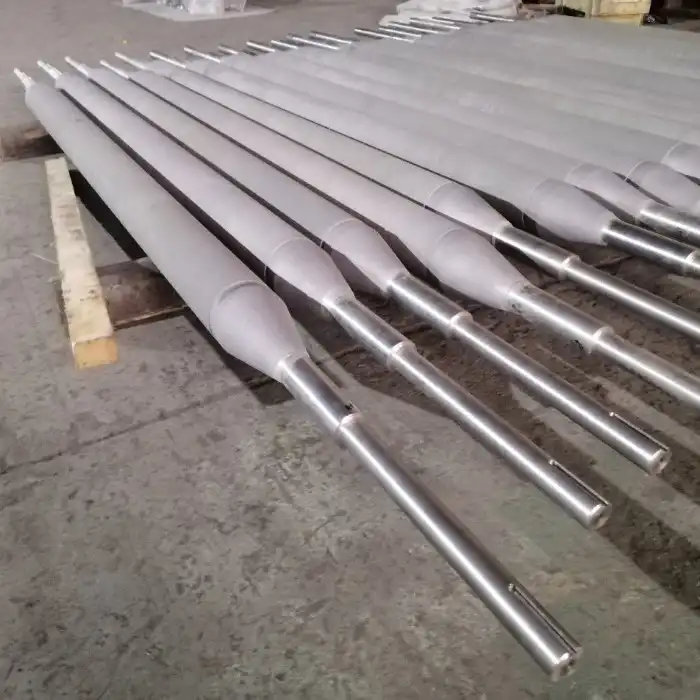Thermal Fatigue and Its Impact on Furnace Roll Longevity
Understanding Thermal Cycling in Furnace Environments
Thermal cycling is a relentless adversary in the lifespan of furnace rolls. As these components are exposed to alternating periods of heating and cooling, they undergo expansion and contraction. This repetitive process can lead to the formation of microscopic cracks on the surface of the roll, which gradually propagate and coalesce over time. The severity of thermal fatigue depends on factors such as the temperature range, frequency of cycling, and the thermal properties of the roll material.
Material Properties and Their Influence on Thermal Resistance
The choice of material for furnace rolls significantly impacts their ability to withstand thermal fatigue. Materials with high thermal conductivity and low thermal expansion coefficients are generally more resistant to thermal shock. Alloys such as heat-resistant stainless steels, nickel-based superalloys, and advanced ceramics are often employed for their superior thermal fatigue resistance. However, the selection must be carefully balanced with other required properties such as mechanical strength and corrosion resistance.
Strategies for Mitigating Thermal Fatigue Effects
To combat the detrimental effects of thermal fatigue, several strategies can be employed. Implementing controlled heating and cooling rates can reduce thermal shock. Surface treatments such as thermal barrier coatings can provide an additional layer of protection against temperature fluctuations. Regular inspection and maintenance, including non-destructive testing techniques, can help identify early signs of thermal fatigue before catastrophic failure occurs.
Mechanical Stress and Structural Integrity Challenges
Load-Bearing Considerations in Furnace Roll Design
Furnace rolls are subjected to significant mechanical stresses due to their load-bearing function within the furnace environment. The weight of materials being processed, coupled with the roll's own mass, creates constant stress on the roll structure. Proper design considerations, including appropriate dimensioning and material selection, are crucial to ensure that rolls can withstand these static and dynamic loads without compromising their structural integrity.
Rotational Forces and Their Effect on Roll Performance
The rotational motion of furnace rolls introduces additional mechanical challenges. Centrifugal forces can lead to deformation, especially at elevated temperatures where material strength is reduced. Balancing issues can cause vibrations, leading to accelerated wear and potential misalignment. Precision manufacturing and regular balancing checks are essential to maintain optimal performance and prevent premature failure due to rotational stresses.
Wear Mechanisms and Surface Degradation
The surface of furnace rolls is particularly vulnerable to wear mechanisms such as abrasion, erosion, and adhesion. Contact with processed materials, especially in applications involving metal or glass production, can lead to gradual material loss and surface degradation. Implementing appropriate surface hardening techniques, such as carburizing or nitriding, can enhance wear resistance. Additionally, selecting roll materials with inherent wear-resistant properties can significantly extend the operational life of furnace rolls.
Corrosion and Environmental Factors in Furnace Roll Deterioration
Chemical Interactions in High-Temperature Environments
Corrosion is a pervasive threat to furnace roll integrity, particularly in high-temperature environments where chemical reactions are accelerated. The presence of aggressive gases, molten metals, or corrosive slags can lead to rapid deterioration of roll surfaces. Understanding the specific chemical environment within the furnace is crucial for selecting appropriate materials and protective measures. Alloys with high chromium content, such as certain grades of stainless steel, offer improved resistance to high-temperature corrosion.
Oxidation and Scale Formation on Roll Surfaces
Oxidation is a common form of corrosion in furnace environments, resulting in the formation of oxide scales on roll surfaces. While some oxide layers can provide a protective barrier, excessive scale formation can lead to spalling and material loss. Controlling the furnace atmosphere and implementing proper cooling strategies can help manage oxidation rates. Additionally, the use of protective coatings or surface treatments can enhance resistance to oxidation and scale formation.
Corrosion Prevention Strategies and Protective Measures
Combating corrosion in furnace rolls requires a multi-faceted approach. Material selection is paramount, with consideration given to both the base material and any surface treatments or coatings. Implementing proper furnace atmosphere control, including the use of inert gases or reducing atmospheres where appropriate, can significantly reduce corrosion rates. Regular cleaning and maintenance of rolls, coupled with the application of corrosion-resistant coatings, can provide an additional layer of protection against environmental degradation.
In conclusion, understanding and addressing the critical factors that lead to furnace roll failure is essential for optimizing industrial processes and reducing operational costs. By focusing on thermal fatigue management, mechanical stress mitigation, and corrosion prevention, industries can significantly extend the lifespan of their furnace rolls and improve overall production efficiency. For expert guidance on selecting and maintaining high-quality furnace rolls tailored to your specific industrial needs, please contact us at info@welongpost.com. Our team of experienced professionals is ready to assist you in enhancing the performance and longevity of your furnace equipment.




